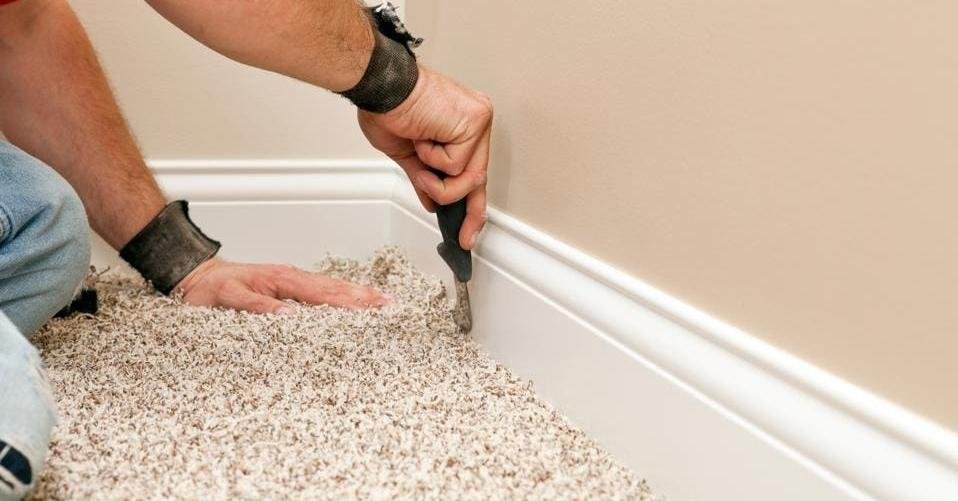When it comes to revamping the flooring in your home, there are lots of decisions, questions and challenges you might face along the way.
Below we’ve listed as many as possible to help you plan for fitting a new floor whenever the time arises.
Fitting a new carpet is a transformative process that requires careful consideration of various factors.
From the initial questions about style and material to the decisions surrounding budget and installation, the journey of selecting and installing carpet can be both exciting and complex.
What are the options?
Choosing the right material carpet
One of the primary questions that often arises is the choice between different carpet materials.
Homeowners must weigh the pros and cons of various options, such as nylon, polyester, wool, or a blend of these fibres.
Each material brings its own set of characteristics to the table.
Nylon, for instance, is known for its durability and resistance to stains, making it a popular choice for high-traffic areas. On the other hand, wool exudes a luxurious feel and natural resilience but may come with a higher price tag. Understanding the lifestyle and specific needs of your household is crucial in making an informed decision.
Choosing the best style of carpet
Equally important is the consideration of carpet styles. From plush and frieze to Berber and cut-and-loop, the options seem endless. Plush carpets, with their velvety and smooth texture, offer a luxurious feel underfoot but may show footprints and vacuum marks more prominently.
Berber carpets, known for their looped construction, provide a durable and casual appearance, ideal for areas with high foot traffic. Deciding on the style that complements both the aesthetic and functionality of the space is a critical step in the decision-making process.
Allocating your Budget
As you delve into the world of carpet, the question of budget inevitably emerges. Determining how much you’re willing to invest in your new carpet involves considering not only the cost of materials but also installation, padding, and potential additional expenses.
While it might be tempting to opt for the least expensive option, it’s essential to strike a balance between cost and quality. Investing in a higher-quality carpet can pay off in the long run, as it tends to be more durable and resistant to wear and tear.
Choosing Underlay or carpet padding
The decision-making process extends beyond the carpet itself to the underappreciated hero beneath it: carpet underlay. Often overlooked, underlay plays a crucial role in the longevity and comfort of your carpet.
It provides insulation, reduces noise, and enhances the overall feel of the carpet underfoot.
Selecting the right carpet underlay for your new floor involves considerations of thickness, material, and density. Thicker padding may offer more comfort but could affect the carpet’s appearance and longevity. Understanding the specific requirements of your chosen carpet and consulting with professionals can guide you toward the optimal padding choice.
Practicalities of Installations
Once the decisions on material, style, and budget are made, the challenges shift toward the practicalities of installation. For those opting for professional installation, the process involves finding a reputable and experienced installer.
Checking reviews and ensuring proper licensing can help you narrow your choices. It’s also crucial to obtain detailed quotes, including labour costs, to avoid any surprises when the final bill arrives.
Will you install it yourself?
DIY enthusiasts, on the other hand, face a unique set of challenges. Installing carpet is a meticulous task that demands precision in measurements, cutting, and fitting. Inaccuracies can lead to visible seams, uneven surfaces, and a less-than-professional finish. Moreover, stretching the carpet correctly is essential to prevent wrinkles and bulges over time. DIY installers must be prepared to invest time in proper preparation, including subfloor inspection, cleaning, and smoothing. While DIY can save on labour costs, it requires a level of skill and patience that not everyone possesses.
Do you have an unusual Room Shape?
Transitioning between different flooring materials or addressing irregular room shapes presents another layer of challenge during carpet installation. Properly planning for transition areas and dealing with unique room configurations require careful measurement and consideration. Installing carpet around obstacles like built-in furniture or odd angles may necessitate creative solutions and, in some cases, professional expertise.
Timing the renovation
Timing is yet another aspect that homeowners often overlook. The installation process can disrupt daily routines, and planning for this disruption is crucial. Considering factors such as the acclimation period of the carpet, drying times for adhesives, and the temporary relocation of furniture can help streamline the process and minimize inconveniences.
Post completion Analysis
The aesthetic integration of the new carpet with the existing décor and colour scheme of the home poses another challenge. Homeowners must assess whether the chosen carpet complements the furniture, wall colours, and overall design aesthetic. Swatches and samples can be invaluable tools in visualizing how the carpet will interact with the existing elements of the space.
Summary
As with any home improvement project, the journey of fitting a new carpet involves a myriad of questions, decisions, and challenges. From the initial contemplation of material and style to the practicalities of installation and the integration into existing spaces, each step requires thoughtful consideration.
While challenges may arise, approaching the process with a well-informed mindset, seeking professional advice when needed, and allowing ample time for careful planning can lead to a successful and satisfying outcome. Ultimately, the investment in a new carpet is not just a financial one; it’s an investment in the comfort, aesthetics, and overall ambience of your home.






